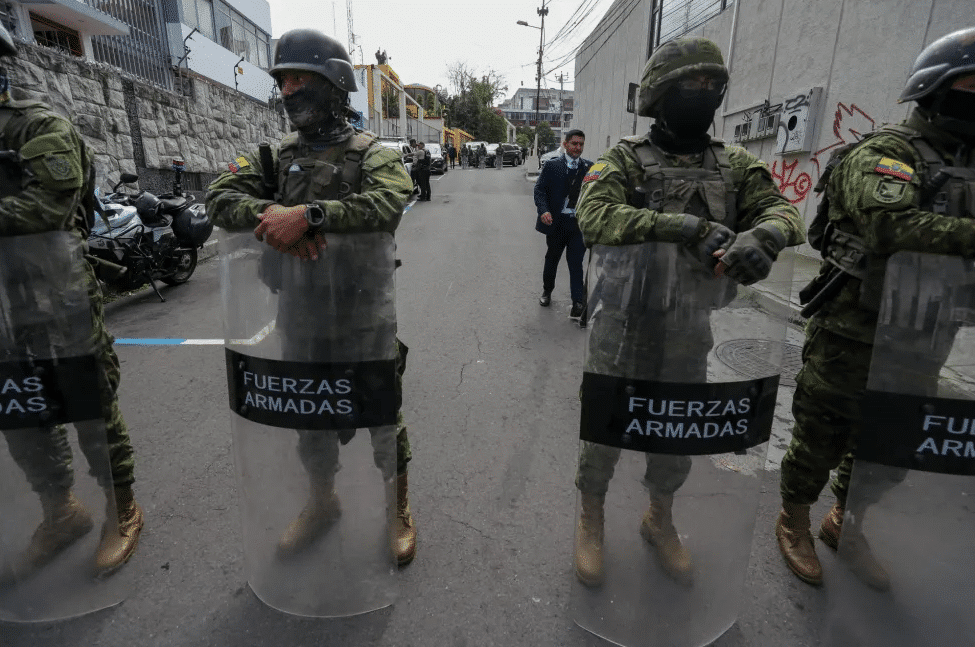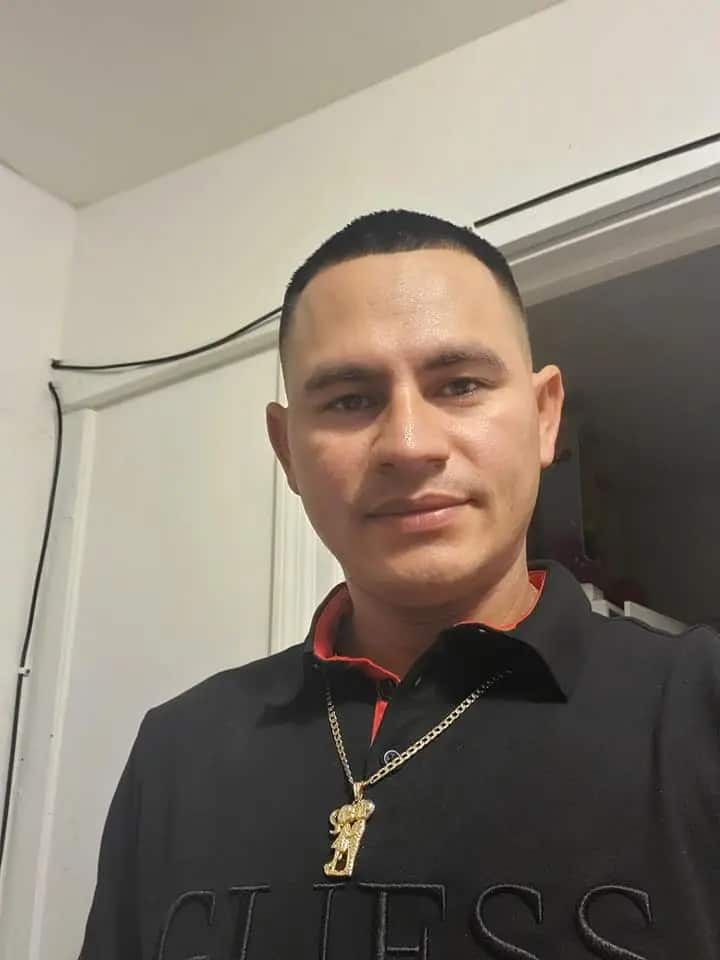10 de abril 2021

The Return of the Military

PUBLICIDAD 1M
PUBLICIDAD 4D
PUBLICIDAD 5D
Boy’s uncle in Miami says the mother is in the hands of kidnappers in Mexico. Nicaraguan government asks for help from Interpol.

Screenshot from the video of the Nicaraguan child left abandoned at the Mexico-US border.
The image of the ten-year-old Nicaraguan boy went viral in the first days of April. His tearful plea for help was a graphic illustration of the current humanitarian crisis at the US southern border.
The boy was found approaching a desolate rural road in Texas on April 1st. He had been abandoned by coyotes, a spokesperson for the US Customs and Border Patrol Office confirmed. In the video, a distraught small boy approaches the border patrol vehicle and asks the official: “Can you help me?”
The video was picked up by dozens of media sites inside and outside the US. Within hours, the face of this young Nicaraguan had become an image of the crisis. His case sparked wide concern, and the search for his full story began.
A few days later, the saga of this ten-year-old boy had enveloped three countries. The boy’s mother is alleged to be in the hands of human traffickers in Mexico, awaiting ransom from family members. Nicaragua has asked for help from Interpol, and from Mexican and US authorities to reunite this family.
The boy, whose name hasn’t been released, was abandoned by a coyote near the Rio Bravo in Texas, in a barren rural area. The agent who rescued him shot the now-famous video. In it, a small boy emerges from a desert landscape and desperately flags down the border patrol car.
“Aren’t you coming with your father or mother?” the agent who rescued him asks. “No one. I came with a group that was coming to turn themselves in. They left me abandoned, and I came here to ask for help,” the little boy asked, crying.
The child was later transferred to a detention center for minors in the city of Donna, Texas. It’s an overcrowded holding center, due to the current crisis on the US southern border.
The child’s mother has been identified as Meylin del Socorro Obregon Leiva, from Nicaragua. She and the boy were hoping to reach Miami, Florida, where two of her brothers already live. However, both she and the boy were allegedly kidnapped in Mexico. The child was released, but his mother remains in the hands of extortionists, who are holding her for ransom.
In an interview with Nicaraguan journalist Miguel Mendoza, Meylin’s brother, Misael Obregon explained her situation in greater detail.
The boy in the video is his nephew, Obregon stated. He was initially travelling with his mother and two cousins – Misael’s children. They were attempting to cross illegally into the United States from Mexico when they were stopped by border agents. Obregon affirmed that his two boys were permitted to enter the US. However, his sister and her ten-year-old son were sent back to Mexico. There, they were supposedly kidnapped by human traffickers.
Misael stated that the kidnappers contacted him to demand money in exchange for the freedom of his sister and nephew. However, he didn’t have the amount of money they were asking. He and his sister then agreed that he should pay enough to free the boy first. He affirmed that his sister remains kidnapped, and that he is in communication with the traffickers. He must pay them to obtain her freedom.
The Nicaraguan government has picked up the case. Rosario Murillo, vice president, and government spokesperson, announced they’d asked Interpol for help localizing Meylin del Socorro Obregon. They also asked for help from the Mexican and US authorities to do the same.
Murillo stated that they’d spoken with the boy’s father, Lazaro Gutierrez Laguna. Gutierrez lives in a rural Nicaraguan community of Muelle de los Bueyes, near El Rama. According to Murillo, Gutierrez confirmed that he was aware that his wife and son had left the country in early February. However, he says he learned of his son’s rescue from the news on April 7th, and doesn’t know where Meylin is. He initially thought she had abandoned the boy, so that he could enter the country. In his last conversation with Meylin, she had said that they were in danger. At that time, she was planning to turn both of them over to immigration officials.
Meanwhile, the US Customs and Border Patrol Office issued their own statement. They confirmed that the child “was fed and examined by medical personnel. Like all unaccompanied minors, he’ll be safely transferred to the custody of the Office for Refugee Resettlements of the US Department of Health and Human Services.”
Now, the boy must wait to be able to be reunited with his uncle Misael. The latter confirmed this procedure in an April 9th telephone interview with Confidencial. Obregon stated he’d already been in communication with the US authorities to receive his nephew. However, they still didn’t have an exact date for their reunion. “Those processes take time,” he added, and promised more details soon.

Misael Obregon Leiva, uncle of the Nicaraguan boy rescued on the U.S. Border. Photo from Facebook.
In an initial press declaration, after the boy was rescued, the Border Patrol offered some more details of the situation at the US southern border.
“Scenes like this are very common. The human traffickers continue abandoning children in desolate regions,” the spokesperson added in a press declaration.
The practice of abandoning children at the US border has become commonplace. On March 30th, a trafficker was videoed throwing two sisters, aged 3 and 5, over the high border wall near El Paso. The video was caught by a security camera. It shows the man throwing the children over the 14-foot wall, so that they’d fall onto the US side.
On March 31, on the Mexican side of the same border area, agents found a four-year-old Honduran boy in the bushes. He was traveling without relatives or acquaintances near the Rio Bravo in Reynosa, Mexico, the EFE news agency reported.
The Border Patrol spokesperson warned that the coyotes don’t care about the welfare of the children. “Don’t believe the human traffickers that will try to tell you the opposite. They’re putting at risk the most vulnerable populations,” he advised.
The humanitarian emergency at the US-Mexico border grows greater by the day. At the beginning of February, the Biden administration stated that – for humanitarian reasons – they wouldn’t turn away the unaccompanied minors. That signified a major change from the harsh policies of the Trump administration..
From then on, the numbers of minors travelling alone has been doubling from one month to the other. In March, 18,990 such children and teens were counted.
Unauthorized migration in general has also increased. On April 7th, officials of the Biden administration released some statistics regarding this surge. They stated that in February, the Border Patrol detained 100,000 people who were trying to cross illegally. By March, that number had risen by 71%, and 172,000 migrants were stopped after entering the US.
Government officials added that of the 172,000 migrants who were caught, 103,900 were deported. That represented 60% of those attempting to enter. Twenty-eight percent of that group had been previously turned back, illustrating the high rate of repetition. “It’s often the same people who come back,” they noted.
Officials began the April 7th press conference with a justification of the current crisis. “We continue digging out of the hole the previous administration left,” they said. The officials were referring to the government of Donald Trump that promoted harsh anti-immigrant policies.
President Biden’s plan includes a number of actions. The most immediate one is broadening the border agency’s capacity to receive the unaccompanied children. In many cases they’re being held in crowded detention centers near the border. Opening more beds, new areas, hiring more personnel and using volunteers is part of the new administration’s strategy.
In addition, they want to create new policies to process the children quickly and get them out of the Border Patrol centers. This means facilitating the process of reuniting the minors with their family members or sponsors. They’re trying to assure adult family members, who are often undocumented, to come forward. These family members are often fearful of being processed and deported themselves if they present themselves to claim the minors.
Biden has tapped Vice President Kamala Harris to spearhead the longer-term solutions. “The long-term vision,” official sources declared, “is to treat the reasons that impel people to come. We need to mitigate the violence, the poverty, the natural disasters, so people can remain at home.” To this end, they’re earmarking millions in humanitarian aid to the “northern triangle” of Centra America: Guatemala, El Salvador, and Honduras.
Representatives of the Biden administration emphasized that they needed Congress’ help to resolve the crisis. New sanctions must be created to fight against the “coyotes” and gangs of human traffickers. A multitude of criminal organizations prey on those traveling north.
It’s often the “coyotes” that convince the migrants to send their children alone. This increased when the change in US policy towards unaccompanied minors was announced. “It’s good to take advantage of the moment, because children can get in fast.” That was the summary a Guatemalan who claimed to be a “coyote” gave the Reuters news agency. “That’s what we tell everyone,” he added. He claimed that they had even organized trips made up entirely of children in the last weeks.
In her daily noon monologue, Rosario Murillo attributed Meylin’s desperate journey on illusions and relationship problems. “[She was] motivated by problems with her partner at home. Since the boy was very close to his mother, the father had agreed that she should take him.”
Murillo added: “This is what we see every day on television and in the media, with the families who are living through these separations (…) In the end, it’s the search, sometimes the illusion or the smokescreen of better living conditions. Because, as we know, the world is difficult, more so with this pandemic we confront.”
Murillo made no reference at all to the specific conditions in Nicaragua. She ignored the three years of economic crisis, the rampant unemployment and the de facto police state there. She also ignored the 100,000 or so Nicaraguan exiles, who’ve sought asylum in Costa Rica, the US and Spain. These left not for an “illusion” but because they were in imminent danger of arbitrary imprisonment for opposing her government. She also chose to ignore the 100-plus “families living through these separations”, because their relatives are political prisoners.
The Biden administration, on the other hand, has manifested concern “for the growing repression of Daniel Ortega’s government in Nicaragua. They’ve asserted that Ortega is leading the country into dictatorship. They’ve demanded a change of direction towards democracy.
There may be hope for a happy ending for the ten-year-old in the video. However, for the thousands of children like him, the end of the crisis won’t be anytime soon. Even the US officials have admitted as much. As one official stated: “No one should expect this to be resolved overnight.”
Archivado como:
PUBLICIDAD 3M
Periodista nicaragüense desde 2007, con experiencia en prensa escrita, televisión y medios digitales. Tiene una especialización en producción audiovisual y una maestría en Medios de Comunicación, Estudios de Paz y Conflicto de la Universidad para la Paz de las Naciones Unidas. Fundadora y editora de Nicas Migrantes, proyecto por el cual ganó el Impact Award 2022 del Departamento de Estado de EE. UU. Ha realizado coberturas in situ en Los Ángeles (Estados Unidos), México, El Salvador, Guatemala, Nicaragua y Costa Rica. También ha colaborado con France 24, The Guardian, Al Jazeera, BBC World Service. Ha sido finalista y ganadora de varios premios nacionales e internacionales, entre ellos el Premio Latinoamericano de Periodismo de Investigación Javier Valdez, del Instituto Prensa y Sociedad (IPYS), 2022.
PUBLICIDAD 3D